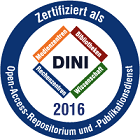Hatt, Séverin; Döring, Thomas F.: Designing pest suppressive agroecosystems : Principles for an integrative diversification science. In: Journal of cleaner production. 2023, vol. 432, 139701, 1-16.
Online-Ausgabe in bonndoc: https://hdl.handle.net/20.500.11811/12861
Online-Ausgabe in bonndoc: https://hdl.handle.net/20.500.11811/12861
@article{handle:20.500.11811/12861,
author = {{Séverin Hatt} and {Thomas F. Döring}},
title = {Designing pest suppressive agroecosystems : Principles for an integrative diversification science},
publisher = {Elsevier Science},
year = 2023,
month = nov,
journal = {Journal of cleaner production},
volume = 2023, vol. 432,
number = 139701,
pages = 1--16,
note = {While many pesticides are detrimental to human health and the environment, drastically reducing their use andrisks in agriculture has been set as a key target for global environmental policies. To this end, redesigning agroecosystems by increasing plant diversity at the cropping system and landscape levels is increasingly seen as imperative. Positive evidence that diversifying agroecosystems suppresses pests is accumulating and many ecological mechanisms driving pest suppression are known. Yet, variability in effects, risks of failure, and the limited adoption of diversification practices, call for improving diversification science. The overarching challenge lies in shifting from homogeneous production systems targeting yield at the cost of high input uses, to complex biodiversity-based environments resilient to pest pressure and delivering multifunctional performances. Therefore, a new conceptual umbrella to guide future agroecosystem design is proposed, which consists of integrating four principles: (i) embracing complexity, by jointly considering the multiple pests and their enemies; (ii) considering traits, in mobilizing the functional grammar; (iii) stacking diversification practices, by strategically combining the multiple facets of plant diversity at multiple scales; (iv) translating ecological processes into socio-economic benefits to adopt a multifunctional perspective. While addressing the associated implications for science and research, the present review critically discusses how to mobilize the spatio-temporal cross-scale dependencies of interactions in agroecosystems. Promoting synergies and building on the functional complementarities of ecological processes is proposed as a way to strengthen agroecosystem resilience to pest outbreaks.},
url = {https://hdl.handle.net/20.500.11811/12861}
}
author = {{Séverin Hatt} and {Thomas F. Döring}},
title = {Designing pest suppressive agroecosystems : Principles for an integrative diversification science},
publisher = {Elsevier Science},
year = 2023,
month = nov,
journal = {Journal of cleaner production},
volume = 2023, vol. 432,
number = 139701,
pages = 1--16,
note = {While many pesticides are detrimental to human health and the environment, drastically reducing their use andrisks in agriculture has been set as a key target for global environmental policies. To this end, redesigning agroecosystems by increasing plant diversity at the cropping system and landscape levels is increasingly seen as imperative. Positive evidence that diversifying agroecosystems suppresses pests is accumulating and many ecological mechanisms driving pest suppression are known. Yet, variability in effects, risks of failure, and the limited adoption of diversification practices, call for improving diversification science. The overarching challenge lies in shifting from homogeneous production systems targeting yield at the cost of high input uses, to complex biodiversity-based environments resilient to pest pressure and delivering multifunctional performances. Therefore, a new conceptual umbrella to guide future agroecosystem design is proposed, which consists of integrating four principles: (i) embracing complexity, by jointly considering the multiple pests and their enemies; (ii) considering traits, in mobilizing the functional grammar; (iii) stacking diversification practices, by strategically combining the multiple facets of plant diversity at multiple scales; (iv) translating ecological processes into socio-economic benefits to adopt a multifunctional perspective. While addressing the associated implications for science and research, the present review critically discusses how to mobilize the spatio-temporal cross-scale dependencies of interactions in agroecosystems. Promoting synergies and building on the functional complementarities of ecological processes is proposed as a way to strengthen agroecosystem resilience to pest outbreaks.},
url = {https://hdl.handle.net/20.500.11811/12861}
}






